5 min lettura
[Eng Below]
Bruchi, vermi e insetti vari vengono mangiati in buona parte del mondo. Nella mia parte di mondo non ancora, c’è la farina di grillo o poco di più, ma l’idea non è che mi abbia mai scandalizzato. Perciò quando mi dicono di assaggiare il vermetto bianco e succoso che il ragazzino tiene tra le dita della mano senza il machete, me ne faccio un punto d’onore a non dire di no. Il machete nell’altra mano funge da incentivo: chissà che fine fanno i turisti che disdegnano le prelibatezze locali.
“Certo, lo assaggio”
Però me lo vedo stampato in faccia quel sorriso falso e contratto.
E quando sento le istruzioni, il sorriso si irrigidisce del tutto:
“¿Cómo?”
Il mio spagnolo è uno spagnolo finto e di certo ho capito male. Però lui ripete e si aiuta con gesti che non lasciano spazio a interpretazioni diverse: è la cabeza che gli devo staccare.
Il motivo è banale: non puoi ingoiarlo ancora vivo il vermetto bianco, perché rischi che sopravviva e poi te lo trovi nello stomaco a girovagare. Quindi mordi la testa, la sputi a terra e ti godi il resto del bruco ciccioso.
Povera bestiola che avrà fatto di male e povera me che mi tocca provare.
La consistenza è quella viscosa che temevo e quindi mi sbrigo a ingoiare. Il retrogusto, però, me lo ritrovo impastato in bocca e devo starmene pure zitta perché in realtà è saporito. Se capita, quasi quasi assaggio anche il fratello. Non era un bruco qualsiasi il malcapitato, lui era l’abitante della noce di cocco e della sua casetta aveva preso il sapore. Un Bounty tutto naturale nella foresta amazzonica colombiana.
Siamo arrivati con un volo interno a Leticia (al confine tra Colombia e Perù) e al diciassettesimo tentativo: il volo è stato cancellato e ritardato e poi di nuovo ritardato e un’altra volta cancellato. Sbatacchiati da un punto all’altro per ore e per inspiegabili incroci astrali abbiamo passato la notte in uno studio dentistico di Medellín. I denti sono sani e per il resto si porta pazienza: l’Amazzonia va guadagnata.
Una volta arrivati, abbiamo preso una lancia per Puerto Nariño. Salita a bordo dopo tutto quel viaggio - di corsa e sconquassata, fai piani e prepara lo zaino, sfascia lo zaino e pure i piani, guarda gli orari, capisci la gente, arrangiati in giro - mi ritrovo sulla barca senza nemmeno essermene accorta.
Poi tiro fuori la mano, mi arrivano gli schizzi e allora è vero: sto navigando sul Rio delle Amazzoni.
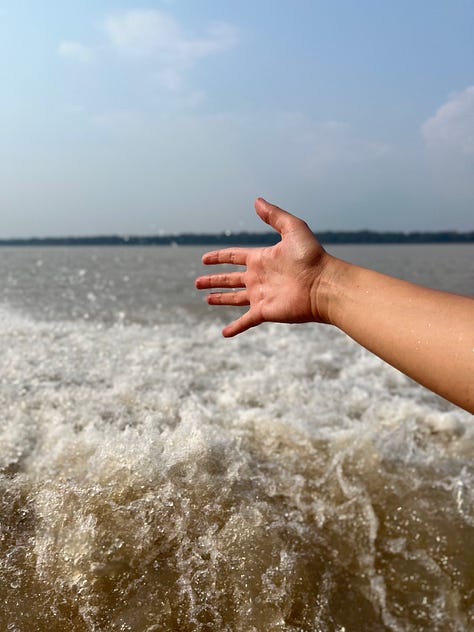
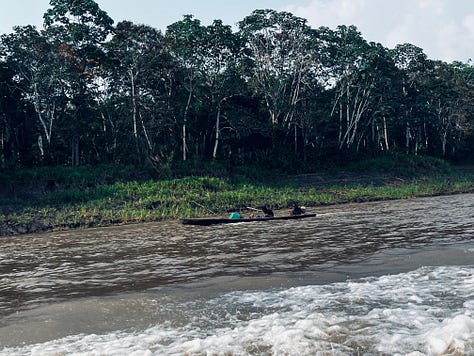
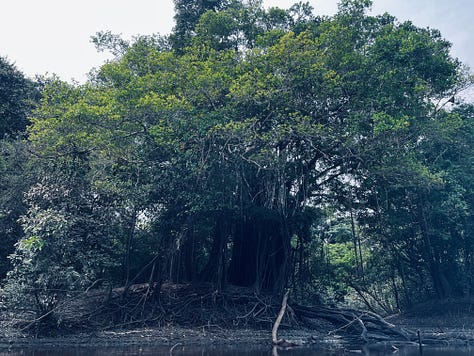

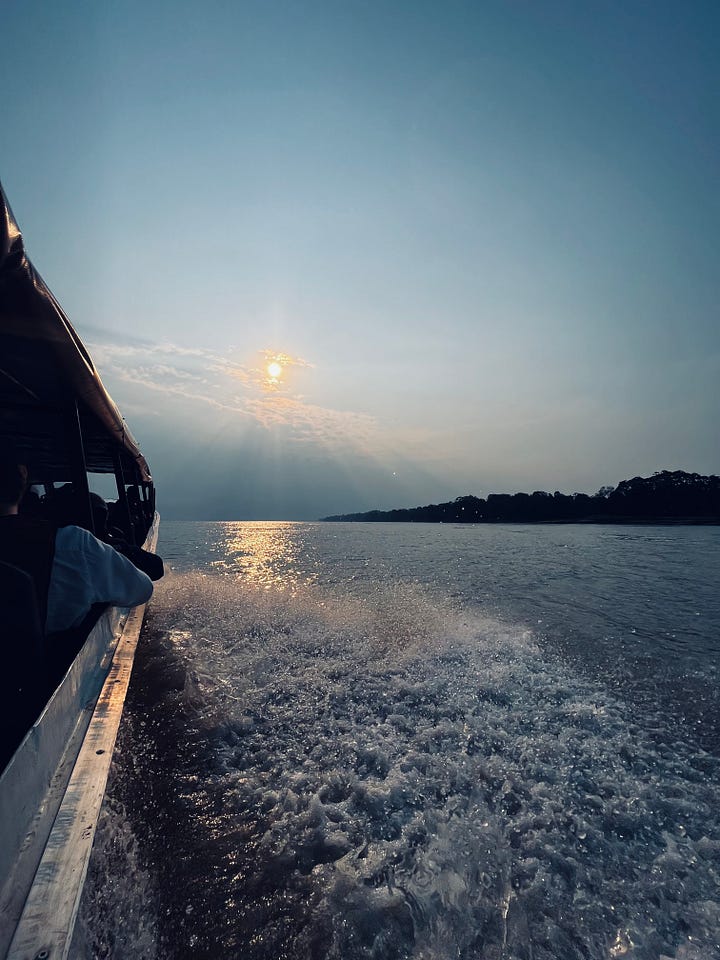
Il corso dell’acqua è marrone e smisurato, intorno alberi infiniti così come il fiume. Sono tutti diversi e appiccicati. Il cedro, l’Acai, le palme di ogni forma, il mogano, l’albero della gomma, le mangrovie sul fondo. Non che io riconosca le piante, per me è solo verde e sempre più fitto.
Più impressionanti di tutto sono i metri di radici che emergono in altezza fuori dall’acqua, si vede il segno scuro lì dove arriverà di nuovo nella stagione delle piogge. È incredibile immaginare che il fiume gigante dove mi trovo sia solo una copia piccina della sua versione autunnale.
Oltre alle foglie, anche i rumori diventano sempre più densi: uccelli, scimmie e chissà chi altro, a darmi il benvenuto o forse mettermi in guardia. Il mio preferito sarà un grosso tacchino, enorme e volante, che si appollaia altissimo e da lassù ti grida pomposo:
“Kamungoooo!”
Giuro, il suo verso fa proprio così. E gli abitanti del posto, che non perdono tempo con nomi creativi, l’uccellone lo chiamano Kamungo. Come si chiami davvero poi l’ho scoperto e nel frattempo dimenticato, però per me lui è Kamungo e Kamungo rimane, spero che sopravviva alla deforestazione e stia sempre bene e bello pacioso ad annunciarsi a chi si avvicina.
La barca fa fermate per me del tutto casuali, ma ogni volta c’è qualcuno che scende nel mezzo del niente, si immerge nella foresta e poi scompare. Mi dico che sta raggiungendo il suo villaggio, però non posso far altro che rimanere perplessa quando sparisce dietro un cespuglio abissale, sembra che quel verde lo abbia ingoiato.
Un’altra cosa che mi perplime è lo stile locale: prevede stivali di gomma a mezza gamba e un machete infilato lì dentro con il manico che spunta ad altezza ginocchio.
A me non pare comodo a dire il vero, io che mi fermo se ho un sassolino, però il coltellazzo a portata di mano deve andare proprio di moda. Il machete è tipo l’iPhone della Foresta Amazzonica, io non ce l’ho e mi sento un po’ nuda, dovrò procurarmelo questo status symbol.
Ti sei perso il viaggio in moto sull’Himalaya indiano? Le trovi qui: Racconti dal Ladakh
Invece qui trovi una storia milanese: Fai la brava, Milano.
E una storia una fiorentina: Bona Ugo Immobiliare
Comunque, tornando al bruco del cocco, il ragazzino che me lo ha offerto è anche quello che mi spiana la via. Vive nel villaggio di nativi dove per qualche giorno dormiremo e di cui vi racconto la prossima volta.
Ha una cresta di capelli mori, i lati rasati e che lui abbia il machete in mano mi rassicura metà e metà. Soprattutto perché lo oscilla da destra a sinistra per acciaccare le zanzare che gli si posano addosso. Io mi ripasso i vaccini che ho fatto e spero che la malaria sia per la prossima vita.
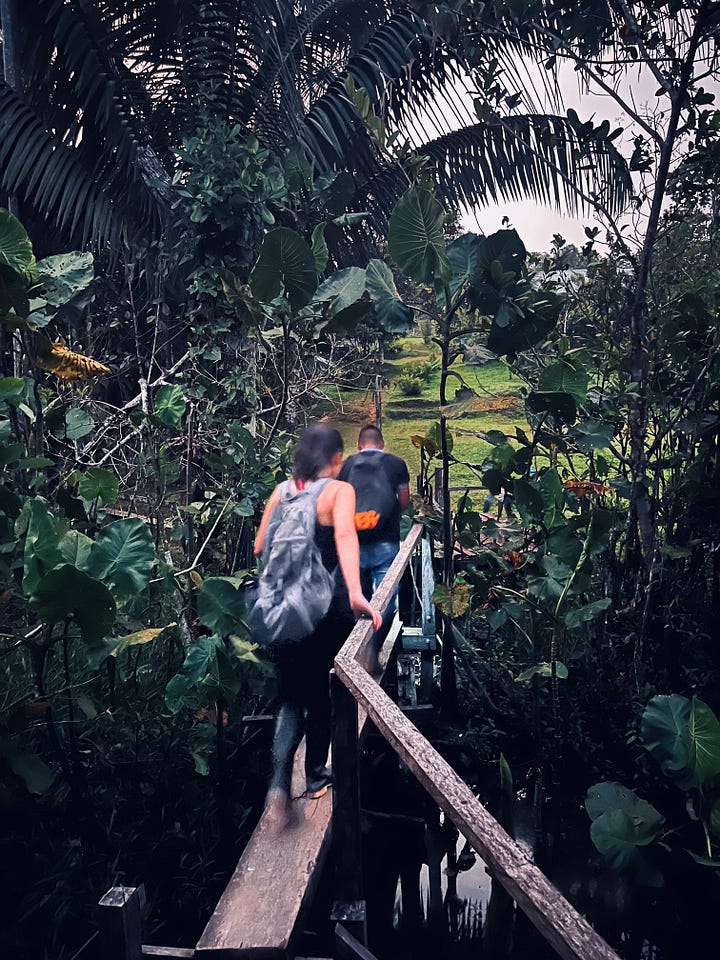
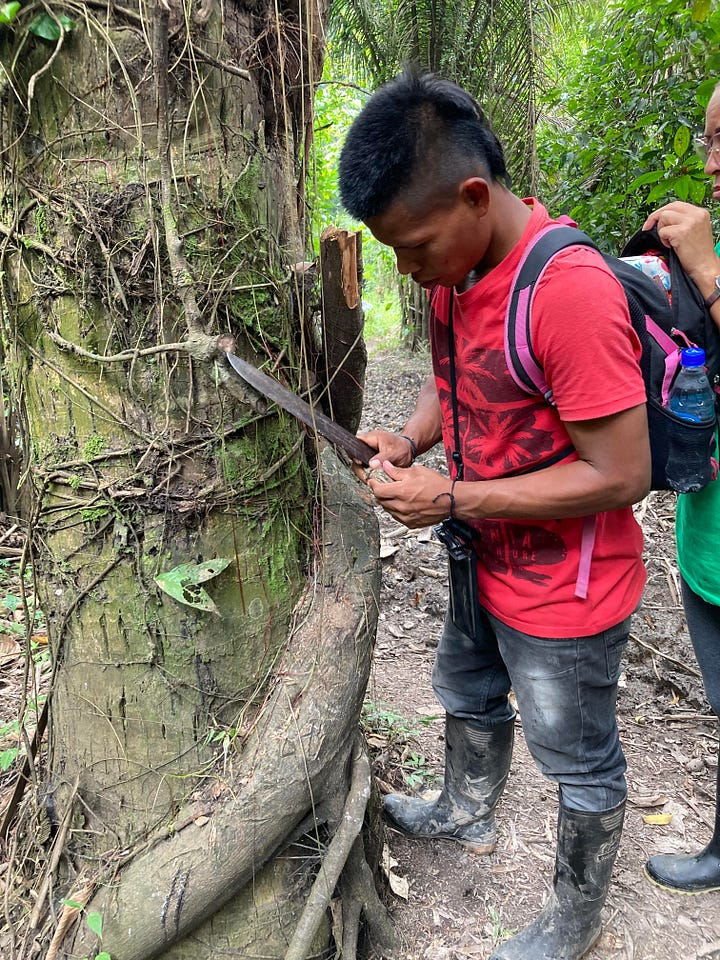
L’escursione nella foresta, quando arriva la notte, non si dimentica. Siamo con le torce, fa buio pesto e i richiami degli animali sono così incombenti che nemmeno riesco ad avere paura. Sono soltanto lì: piccola, persa e allibita. Intanto loro squittiscono, ruggiscono, ululano, gridano, fischiano, ronzano, cantano. Tranne il Kamungo che dorme e non mi saluta.
Io comunque ne sento anche troppi, ma vedere non vedo niente, sono concentrata con la mia torcia a seguire il ragazzo davanti e lui si diverte a indicarceli tutti: tarantole, scorpioni, insetti stecco e grilli troppo grossi per essere grilli.
“Ah mannaggia, in tutto il giorno non vi ho proposto serpenti.”
“Guarda fa niente, come avessi accettato.”
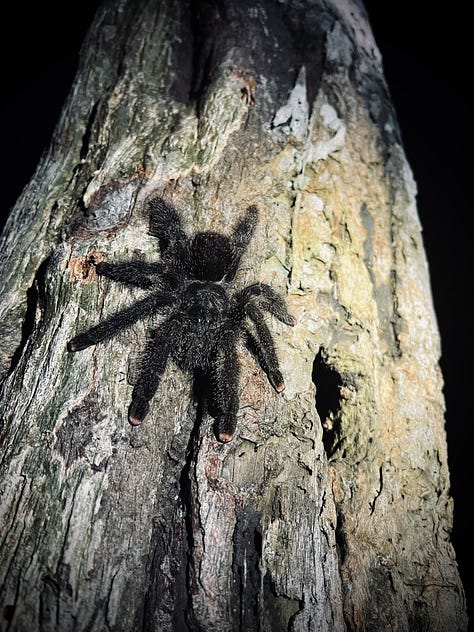
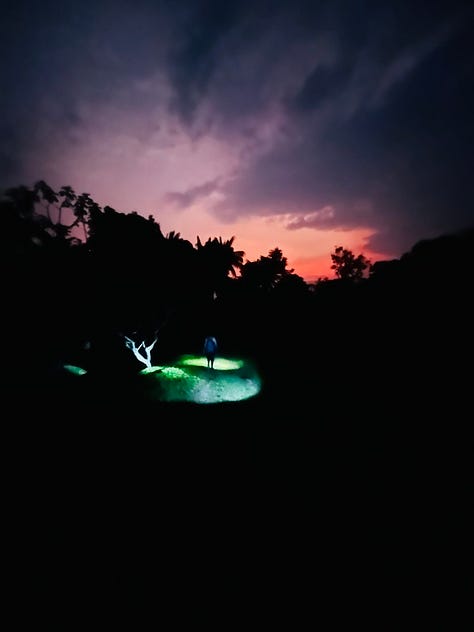
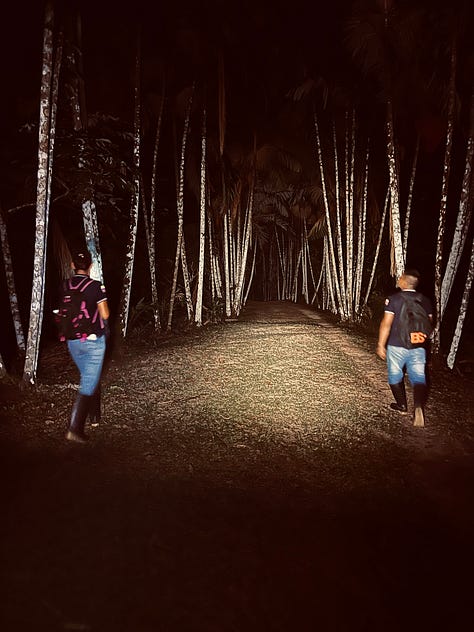
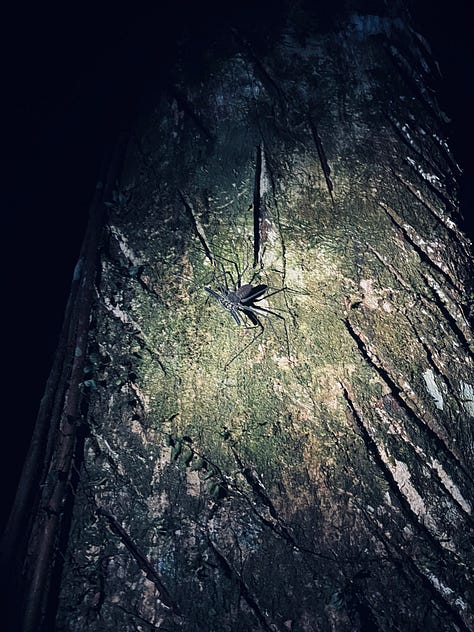
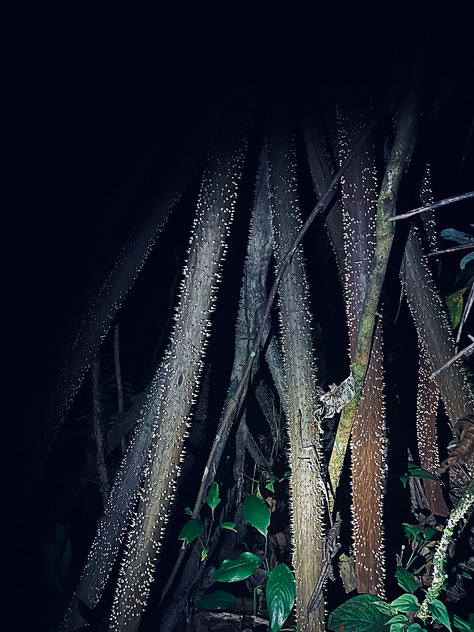
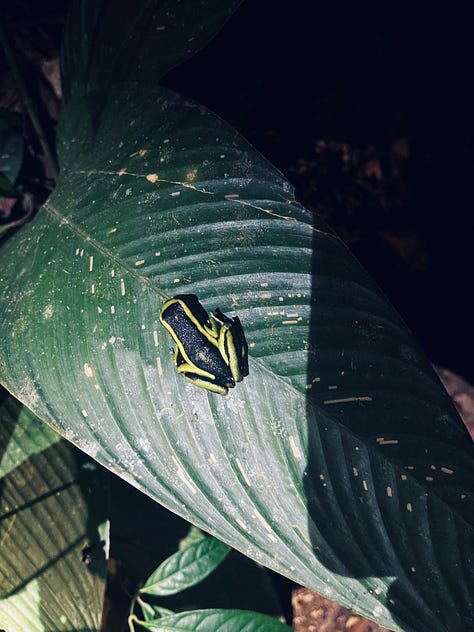
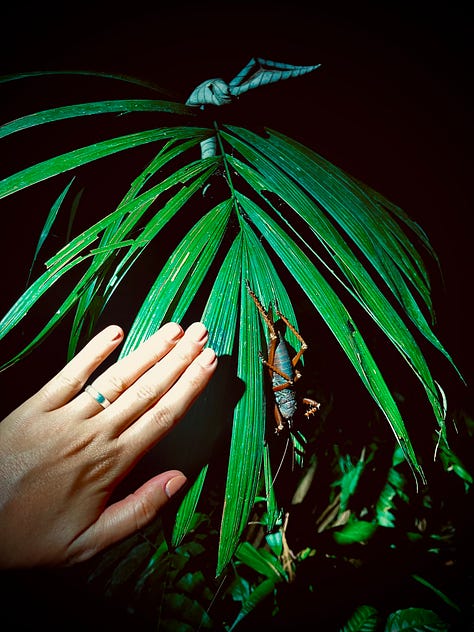
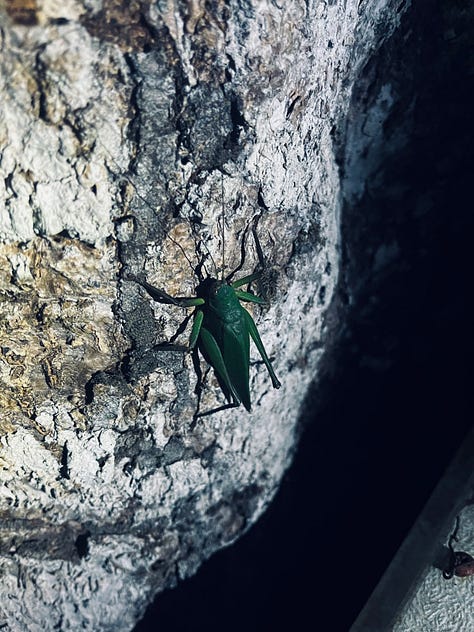
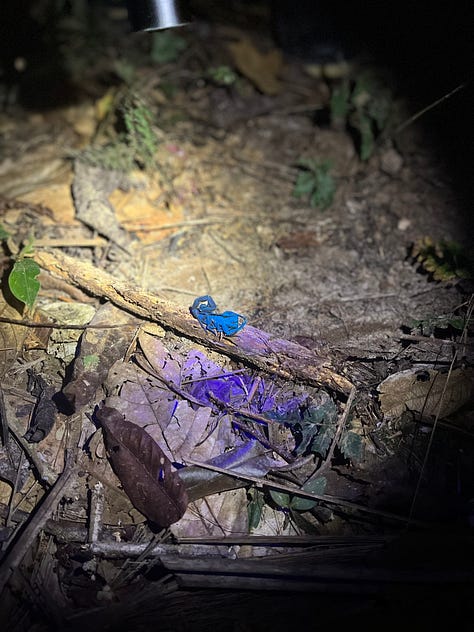
Poi a un certo punto cado giù.
La terra mi sprofonda sotto i piedi e io, che Indiana Jones da piccola l’ho visto per bene, subito penso alle sabbie mobili. Arrivo giù fino al ginocchio e il ragazzino corre a salvarmi, lui mi pare sereno e quindi mi calmo. Gli chiedo se fossero sabbie mobili e mi dice assolutamente di no, di non preoccuparmi: lì non esistono.
Quella dove sono finita era solo una tana che, con il fondo melmoso, si collega al Rio delle Amazzoni. Quindi tranquilla era soltanto un buco e lì ci vive un anaconda.
E poi prosegue che non c’è per niente bisogno di allarmarsi perché, come ho sentito, la tana era vuota e l’anaconda non c’era.
Ah beh d’accordo, allora tutto normale. Ci allontaniamo velocemente e io in testa ho un solo pensiero: speriamo l’anaconda non torni dalla passeggiata, confido forte nella sua vita sociale e che resti fuori tutta la notte. Ho un po’ il timore che sia lì attorno e che decida di vendicarsi.
Speriamo non si accorga che gli ho invaso la casa, speriamo che i serpenti non sentano odori, e - soprattutto ti prego speriamo - che non sia parente col bruco del cocco.
Gaia
Ti è piaciuto il primo racconto dalla foresta amazzonica? Qui puoi aiutarmi a condividerlo:
Hai letto fino a qui? Clicca sul cuoricino, così saprò che ci sei! <3
Meglio ancora? Lasciami un commento:
Ci vediamo mercoledì prossimo con la seconda tappa nella foresta amazzonica
Mi segui già su Instagram e su Facebook?
[ENG - 5 MINUTES READING TIME]
CATERPILLAR, ANACONDA, AND MACHETE
Caterpillars, worms and various insects are eaten in much of the world. In my part of the world not yet, there is cricket meal or a little more, but the idea has never shocked me. So when they tell me to taste the juicy white worm that the little boy holds between the fingers of his hand without the machete, I make it a point of honor not to say no. The machete in the other hand serves as an incentive: who knows what happens to tourists who disdain local delicacies.
"Sure, I'll try it."
I can see that fake, contracted smile on my face, though.
And when I hear the instructions, the smile freezes completely:
“¿Cómo?”
My Spanish is fake Spanish, and I must have misunderstood. But he repeats it, and his gestures leave no room for other interpretations: I have to bite off its cabeza.
The reason is simple: you can’t swallow the white worm alive because it might survive and then wander around in your stomach. So, bite the head, spit it out, and enjoy the rest of the plump caterpillar.
Poor creature, what did it ever do to deserve this, and poor me, having to try.
The texture is as slimy as I feared, so I hurry to swallow. The aftertaste, though, lingers in my mouth, and I must shut up because it’s actually tasty. If the opportunity arises, I might even try its brother. Not just any caterpillar was the unfortunate one, he was the inhabitant of the coconut and from his little house he had taken the flavor. A completely natural Bounty in the Colombian Amazon forest.
Hey! How are you today? Thanks for reading! Subscribe for free to receive new posts:
We arrived with an internal flight to Leticia, at the border between Colombia and Peru, on the seventeenth attempt: the flight was canceled, then delayed, then delayed again, and canceled once more time. Shuffled from one place to another for hours, and by some inexplicable astral crossing, we spent the night in a dentist’s office in Medellín. Teeth are healthy, and patience is a virtue: you have to earn the Amazon Rainforest.
Once we arrived, we took a boat to Puerto Nariño. Climbing aboard after all that travel - rushing and scrambling, making plans and packing the backpack, smashing the backpack and plans too, watching schedules, understanding people - I find myself on the boat without even realizing it.
But I stick my hand out, feel the splashes, and it’s real: I’m sailing on the Amazon River.
The water is brown and immense, surrounded by endless trees. They’re all different and crammed together. Cedar, Acai, various palm trees, mahogany, rubber trees, mangroves at the bottom. Not that I can recognize the plants; to me, it’s just green and increasingly dense.
Most impressive are the meters of roots rising out of the water, showing a dark mark where the water level will reach again in the rainy season. It’s incredible to think that this giant river is only a tiny version of its autumn self.
Besides the leaves, the sounds also become denser: birds, monkeys, and who knows what else, welcoming, or perhaps warning me. My favorite will be a big turkey, huge and flying, perched high and shouting pompously:
“Kamungoooo!”
I swear, that’s exactly how it sounds. And the locals, who don’t waste time with creative names, call the big bird Kamungo. What the real name is then I found out and promptly forgot, but to me, it’s Kamungo and will always be Kamungo. I hope it survives deforestation and stays happy and peaceful announcing itself to anyone who approaches.
The boat makes stops that seem completely random to me, but each time, someone gets off in the middle of nowhere, dives into the forest, and disappears. I tell myself they’re reaching their village, but I can’t help being puzzled when they vanish behind a massive bush, as if the greenery swallowed them.
Another thing that perplexes me is the local style: it involves mid-calf rubber boots with a machete stuck in them, handle poking out at knee height.
It doesn’t seem comfortable to me; I stop if I have a pebble in my shoe, but having a big knife handy must be fashionable. The machete is like the iPhone of the Amazon Rainforest; I don’t have one and feel a bit naked. I’ll have to get this status symbol too.
Did you miss the motorcycle trip to the Indian Himalayas? You can find them here: Tales from Ladakh
Here you have a story from Milano: BE GOOD, MILANO
And one from Firenze: BONA UGO REAL ESTATE
Anyway, back to the coconut caterpillar, the boy who offered it to me is also the one leading the way.
He lives in the native village where we’ll be staying for a few days, which I’ll tell you about next week. He has a crest of dark hair with shaved sides, and his holding the machete reassures me half and half. Mostly because he swings it back and forth to crush mosquitoes that land on him. I mentally review the vaccines I got and hope malaria is for next life.
The forest excursion at night is unforgettable. We have flashlights, it’s pitch dark, and the animal calls are so overwhelming I can’t even be scared. I’m just there: small, lost, and awestruck. Meanwhile they squeak, roar, howl, scream, whistle, buzz, sing. Except for Kamungo, who’s asleep and doesn’t greet me no more. I hear plenty but see nothing, focusing my flashlight on following the boy ahead, who enjoys pointing out everything: tarantulas, scorpions, stick insects, and crickets too big to be crickets.
“Oh what a pity: all day together, and I haven’t shown you any snakes.”
“Look, it’s fine, really don’t bother.”
Then at one point, I fall down.
The ground collapses beneath my feet, and having watched Indiana Jones, I immediately think of quicksand. I sink to my knee, and the boy runs to save me; he seems cool, so I calm down. I ask if it was quicksand, and he says absolutely not, nothing to worry about: there’s no quicksand there.
What I fell into was just a burrow that, with a muddy bottom, connects to the Amazon River. So, relax, it was just a hole, and an anaconda lives there.
He adds there’s no need to worry because, as I felt, the burrow was empty, the anaconda wasn’t there.
Oh, well alright, then everything’s normal. We quickly move away, and I have only one thought: I hope the anaconda doesn’t come back from its walk, I trust strongly in its social life and that it will stay out all night. I’m a bit worried it’s around and might seek revenge.
Let’s hope it doesn’t realize I’ve invaded its home, let’s hope that snakes can’t smell, and – please, oh please let’s hope – that it’s not related to the coconut caterpillar.
Gaia
If you liked it, you can help share the story here:
Have you read this far? Click on the little heart so I know.
You can even leave me a comment:

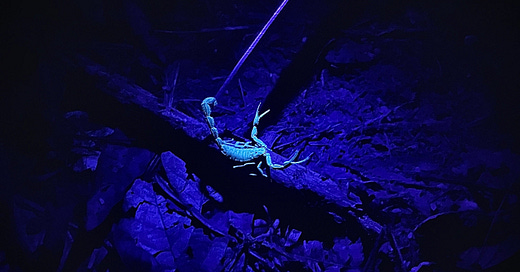



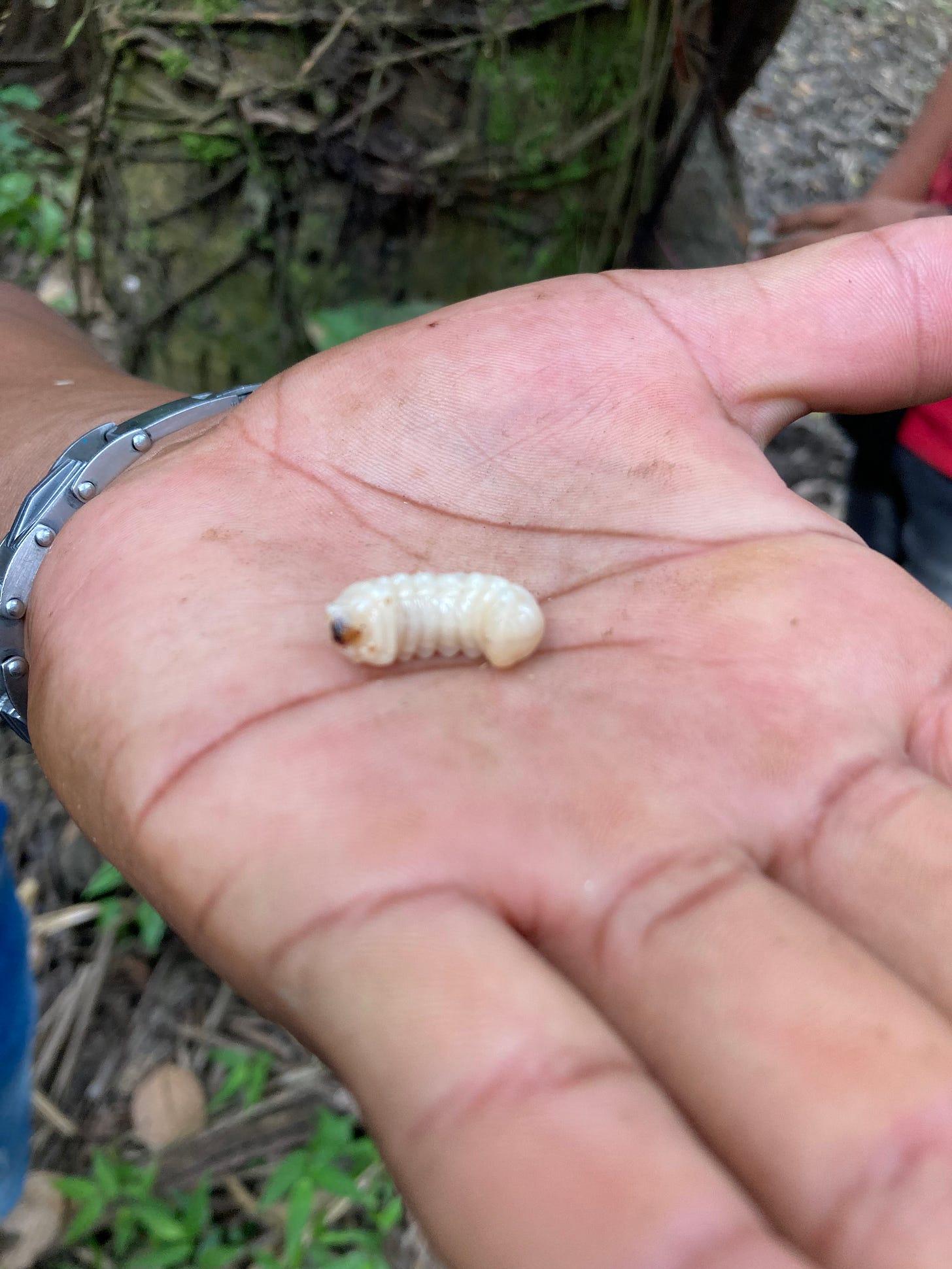
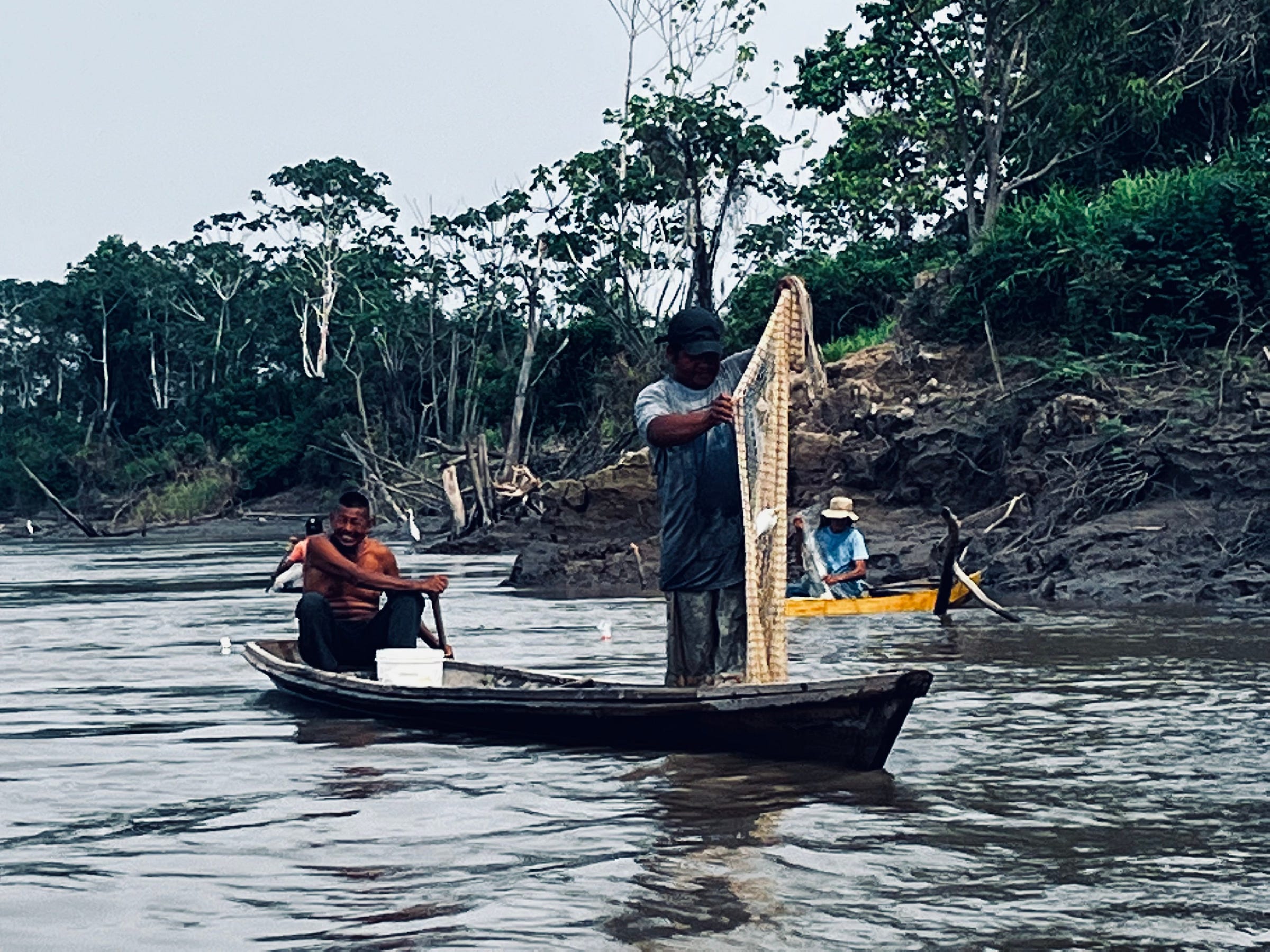
Gaia, sei bravissima. Mi hai coinvolto emotivamente